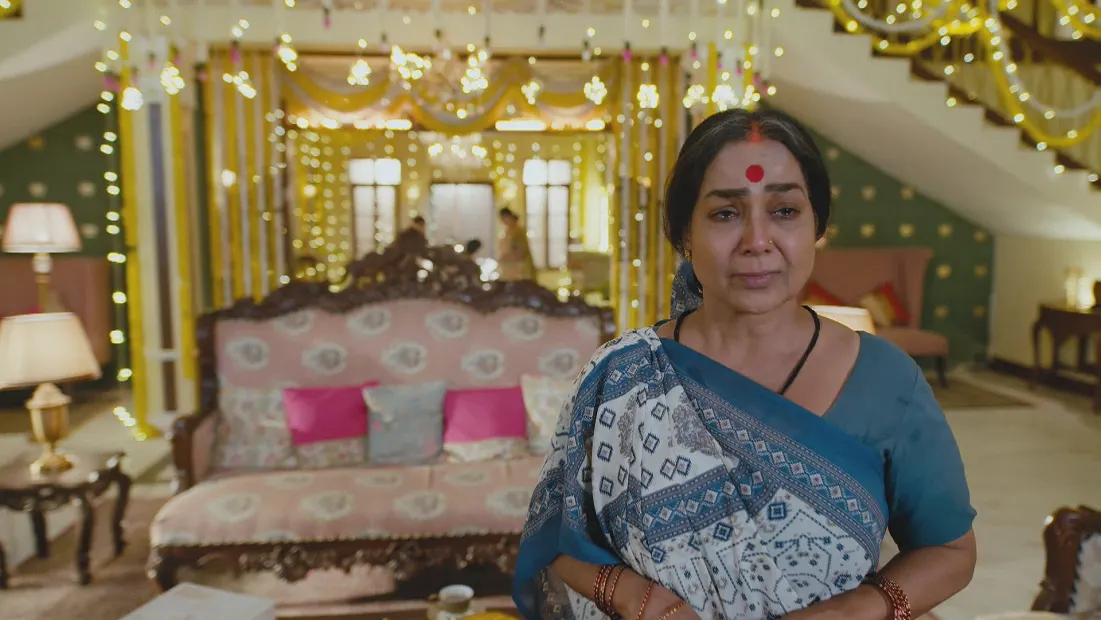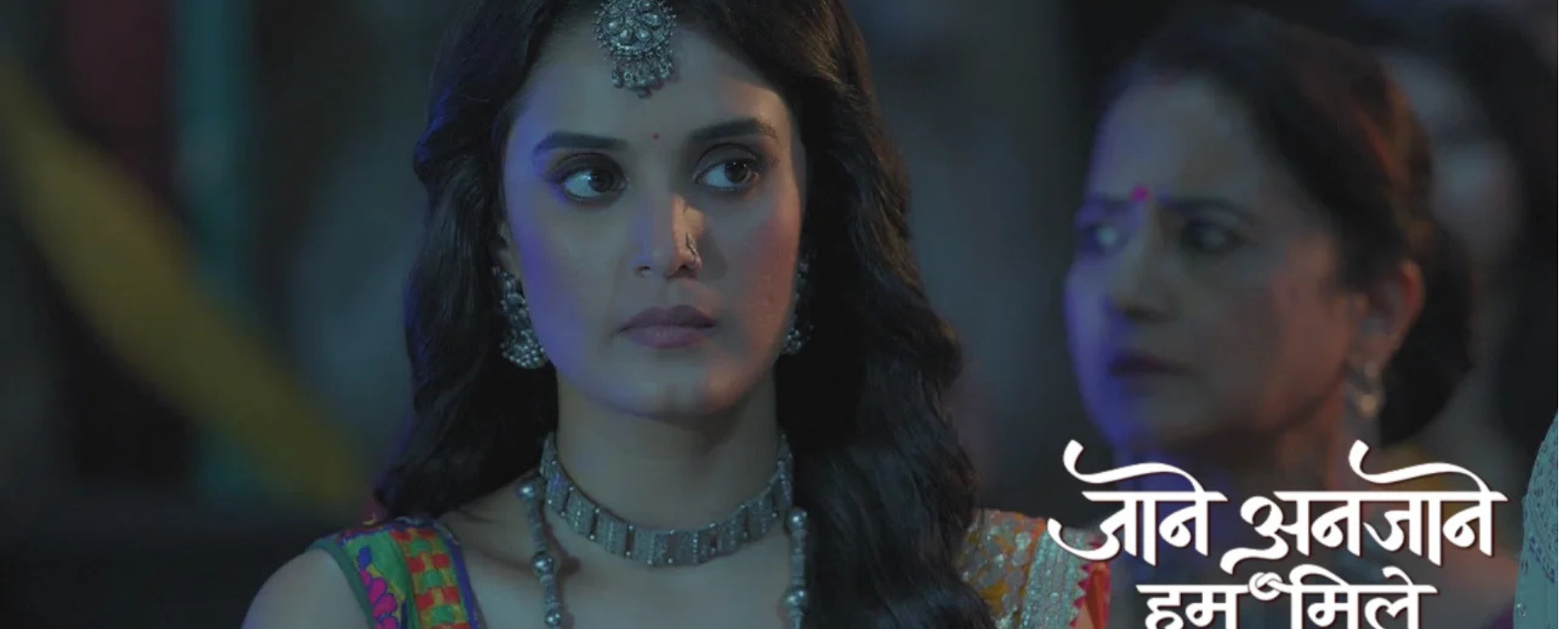Some weeks pivot on one image. For Ganga Mai Ki Betiyan, the stretch from November 1–7 turns on a single, quiet sign: a saree slips from its perch and settles over Siddhu and Sneha. He had once bought that saree for Sneha, then handed it to Ganga. Standing before Chaura Maata, unsure and asking for guidance, Siddhu takes the fall of that same saree as an answer. His takeaway is simple and seismic: he will not leave Sneha alone.
This is your crisp, zero-fluff Ganga Mai Ki Betiyan weekly recap—what happened, why it matters, and how the show used faith, memory, and a well-earned gesture to move everyone forward without turning anyone into a caricature.
Ganga Mai Ki Betiyan is now streaming; jump to the latest episodes or rewatch the week’s turning-point scene in context.
The High Point: Chaura Maata Answers Without Words
Siddhu arrives at the shrine with a knot in his chest and a straight question: what is the right thing to do? The direction resists spectacle. No thunderclap, no orchestral swell—just a hush as the saree slips and lands over Siddhu and Sneha together. It’s a profoundly domestic sign: cotton and gravity doing the work of counsel. Siddhu, who is not the type to romanticize coincidence, reads it as blessing, the nudge he needed to stop dithering. In a week where everyone wants him to choose, he finally chooses presence.
“He Will Never Leave Sneha Alone”: Why That Line Lands
Vows can feel cheap in daily soaps if they come too quickly or too loudly. Not here. The line lands because the show has earned Siddhu’s hesitation. He has been torn between affection, duty, and the weight of past choices. By tying his promise to Chaura Maata’s sign, the writing gives that vow a moral anchor. It isn’t a mood swing; it’s an alignment—head, heart, and a little help from the divine. If your queue skews to family-first narratives with lived-in stakes, park this beside our Family TV show shelf for a thematically neat double bill later.
The Saree as a Character: Memory, Misdelivery, Meaning
That saree carries history: purchased for Sneha, handed to Ganga, and now falling over Siddhu and Sneha at the exact moment he asks for guidance. The object does what great props do—it holds the timeline. It reminds us that Siddhu’s indecision wasn’t cruelty; it was confusion. The fall reframes the fabric as consent from the cosmos: a quiet “go on” in threads and folds.
Sneha’s Arc: Dignity Before Declaration
The week respects Sneha’s agency. She doesn’t beg, bargain, or weaponize hurt. She shows up, keeps boundaries, and lets Siddhu do the hard work of clarity. When the promise finally arrives, it doesn’t erase her wounds; it acknowledges them. That’s why her acceptance feels like dignity, not surrender. Her presence under the saree isn’t a passive accident—it’s a co-signed signal.
Ganga’s Place in the Triangle: Not a Villain, Not a Footnote
A weaker drama would flatten Ganga into the obstacle. This one allows her to be fully human—wronged in places, wrong in others, but never reduced. The saree’s itinerary (from Sneha to Ganga and back, symbolically) is the week’s most economical storytelling device. It says: everyone matters, even when the choice is clear. Ganga’s response—less a tantrum, more a reckoning—keeps room for future repair rather than permanent fracture. That’s a big reason this Hindi TV show stays watchable over long arcs; it prioritizes consequence over caricature. If you browse by language, the Hindi TV shows lane is your best next stop.
Siddhu’s “Fix”: What Was Actually at Stake
The fix wasn’t just romantic. It was reputational (what the community reads), relational (what Sneha hears in his silences), and spiritual (what Siddhu feels he owes to Chaura Maata and to promises he made, even implicitly). By seeking guidance publicly, he outsources pride and insources accountability. The saree falling is the show’s way of answering a question Siddhu finally dared to ask out loud.
Soft Power, Not Sermons: How the Show Uses Faith
One reason the week works: faith isn’t used as a cudgel. There’s no punitive god, no quick-fix miracle. The shrine sequence is observational—candles, a murmur of prayers, and fabric responding to breeze and chance. The meaning arrives because Siddhu is ready to receive it, not because the plot needed a shortcut. That modern restraint lets the devotional setting breathe as culture, not contrivance—exactly the balance you expect from a drama TV show that knows its audience.
Episode Highlights: The Moments You’ll Rewind
-
The ask: Siddhu’s face, stripped of bravado, as he admits he doesn’t know. In a genre that loves certainty, that’s radical.
-
The fall: The saree’s descent is staged like a truth arriving slowly, then all at once. You can almost hear the room exhale.
-
The vow: “I will never leave you alone” plays as promise and penance—a line for Sneha, and a line to himself.
-
The aftermath: No fireworks, just small shifts—how people look at them, how they speak to Ganga, how Sneha stands a fraction taller.
Craft Notes: Camera, Cutting, and the Blessing of Restraint
The camera stays at eye level, refusing melodramatic angles. Edits hold a beat longer than usual, letting gestures register—Siddhu’s hands unclasping, Sneha’s shoulders easing, Ganga’s eyes narrowing not in malice but in thought. Sound design sits back; ambient temple noise does the lifting. In a week where lesser shows would underline, this one trusts the viewer.
What This Sets Up for Next Week
-
A public stance: Siddhu’s promise isn’t private. Expect community dynamics to shift—more support from some quarters, sharper whispers from others.
-
Ganga’s next move: Not a spiral, a recalibration. The show has seeded her capacity for grace; watch for it.
-
Sneha’s agency squared: Expect her to set terms—partly to protect herself, partly to help Siddhu keep the promise he just made.
-
Faith as framework: Having read a sign once, will Siddhu now own the consequences without seeking a sign for every step? That’s the adult arc we’re likely to see.
Why This Week Worked (Beyond the Image)
Because it honored sequence: confusion → question → sign → promise → posture. By the time the saree falls, we aren’t being manipulated; we’re being answered. And because it honored everyone: Sneha gets dignity, Siddhu gets clarity, and Ganga gets complexity. For a week that coincided with the series’ 50-episode milestone, that’s the right way to mark the moment—with growth, not gimmicks.
Bio of Author: Gayatri Tiwari is an experienced digital strategist and entertainment writer, bringing 20+ years of content expertise to one of India’s largest OTT platforms. She blends industry insight with a passion for cinema to deliver engaging, trustworthy perspectives on movies, TV shows and web series.




